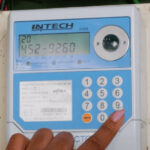The Higher Education Loans Board (HELB) plays a crucial role in financing higher education in Kenya. Each year, thousands of students rely on HELB loans to cover tuition fees and other expenses associated with their studies. However, one of the most common concerns among students is the time it takes for HELB money to reflect in their accounts after it has been disbursed. This article provides a comprehensive overview of the process, focusing on the typical 72-hour timeframe, and explains what students can expect during this period.
Understanding the HELB Disbursement Process
The disbursement of HELB funds involves several steps, from approval to the actual crediting of money into a student’s bank or M-PESA account. After a student’s loan application is approved, HELB initiates the disbursement process. This involves transferring funds to various financial institutions or mobile money platforms, depending on the student’s preference. The entire process is designed to ensure that the funds are securely and accurately transferred to the correct recipients.
The 72-Hour Waiting Period
Once HELB disburses the funds, students can expect the money to reflect in their accounts within 72 hours. This three-day period is standard and accounts for the time it takes for the funds to move through the banking or mobile money systems. During this time, several backend processes occur, including verification of account details, reconciliation of transactions, and final crediting of the funds.
Why 72 Hours?
The 72-hour window is primarily due to the involvement of multiple entities in the disbursement process. HELB, banks, and mobile money operators like M-PESA each play a role in ensuring that the funds are correctly allocated. While technology has sped up many financial transactions, the waiting period is a safeguard to prevent errors and ensure that each student receives the correct amount.
Factors That May Influence the Timeframe
While 72 hours is the standard waiting period, several factors can influence how quickly the funds reflect in a student’s account. These include:
- Banking Holidays: If HELB disburses funds on or around a banking holiday, the processing time might be longer due to reduced banking operations.
- Network Issues: For students receiving their funds via M-PESA, network issues can occasionally delay the reflection of funds.
- Account Verification Delays: If there are discrepancies in the account details provided by the student, the disbursement process may be delayed as HELB or the bank works to resolve the issue.
What to Do If Your Funds Don’t Reflect After 72 Hours
If the 72-hour period elapses and the funds have not yet reflected in your account, there are several steps you can take:
- Contact HELB: The first step is to reach out to HELB through their customer care channels. They can provide information on whether there were any issues with the disbursement.
- Check with Your Bank or Mobile Money Provider: Sometimes, the delay may be on the bank or mobile money operator’s side. Contacting them can help you understand if there are any processing issues.
- Ensure Your Account Details Are Correct: Double-check that the account details you provided to HELB are accurate. Incorrect details could lead to delays or failed disbursements.
Managing Expectations: Planning Around the Disbursement Period
Understanding the 72-hour waiting period is crucial for effective financial planning. Students should avoid making immediate financial commitments that rely on the HELB funds, especially within the 72-hour window. By planning around this timeframe, students can avoid unnecessary stress and ensure they have the funds when needed.
The Role of Technology in Reducing Delays
HELB has increasingly embraced technology to streamline the disbursement process. The integration with platforms like M-PESA and online banking systems has significantly reduced the time it takes for funds to reflect compared to traditional banking methods. However, while technology has improved efficiency, the 72-hour window remains a standard to accommodate any unforeseen delays.
Case Studies: Student Experiences with HELB Disbursements
To better understand the disbursement process, let’s consider some real-life student experiences. For example, many students have reported receiving their funds within the first 24 hours of the 72-hour window, especially when using mobile money platforms like M-PESA. Others have encountered minor delays due to issues such as incorrect account numbers or network outages but eventually received their funds within the expected timeframe.
Tips for First-Time HELB Beneficiaries
For first-time beneficiaries, the HELB disbursement process can be nerve-wracking. Here are some tips to ease the process:
- Keep Track of Application Deadlines: Ensure that your loan application and subsequent steps are completed on time to avoid delays in disbursement.
- Stay Informed: Regularly check HELB updates and communicate with your institution’s finance office to stay informed about the disbursement schedule.
- Be Patient: Understanding that the 72-hour period is standard will help you manage your expectations and avoid unnecessary anxiety.
Conclusion
The disbursement of HELB funds is a critical process that ensures students have the financial support they need for their studies. While the 72-hour waiting period might seem long, it is designed to ensure accuracy and security in the transfer of funds. By understanding the process and planning accordingly, students can effectively manage their finances and focus on their academic pursuits.





